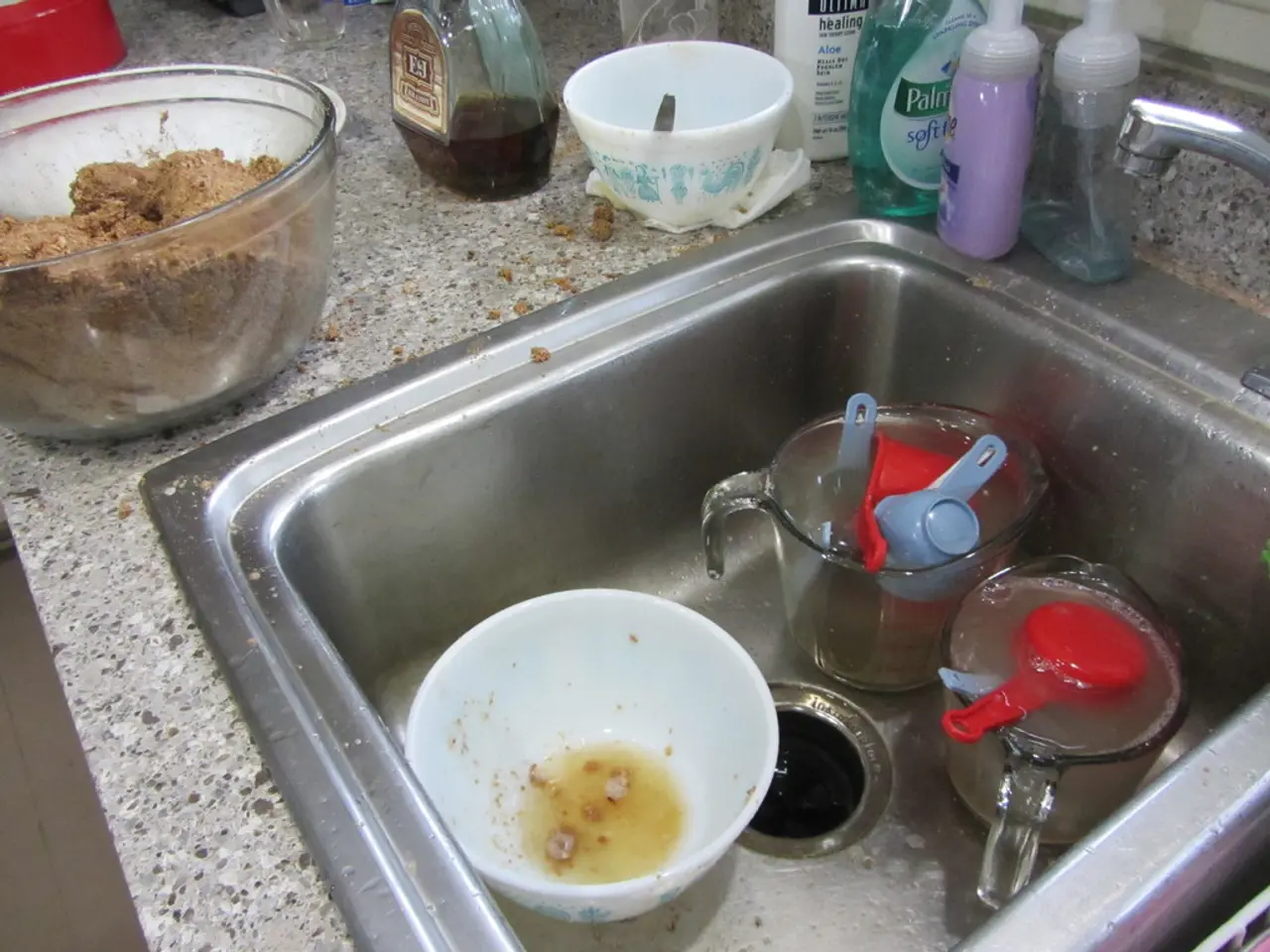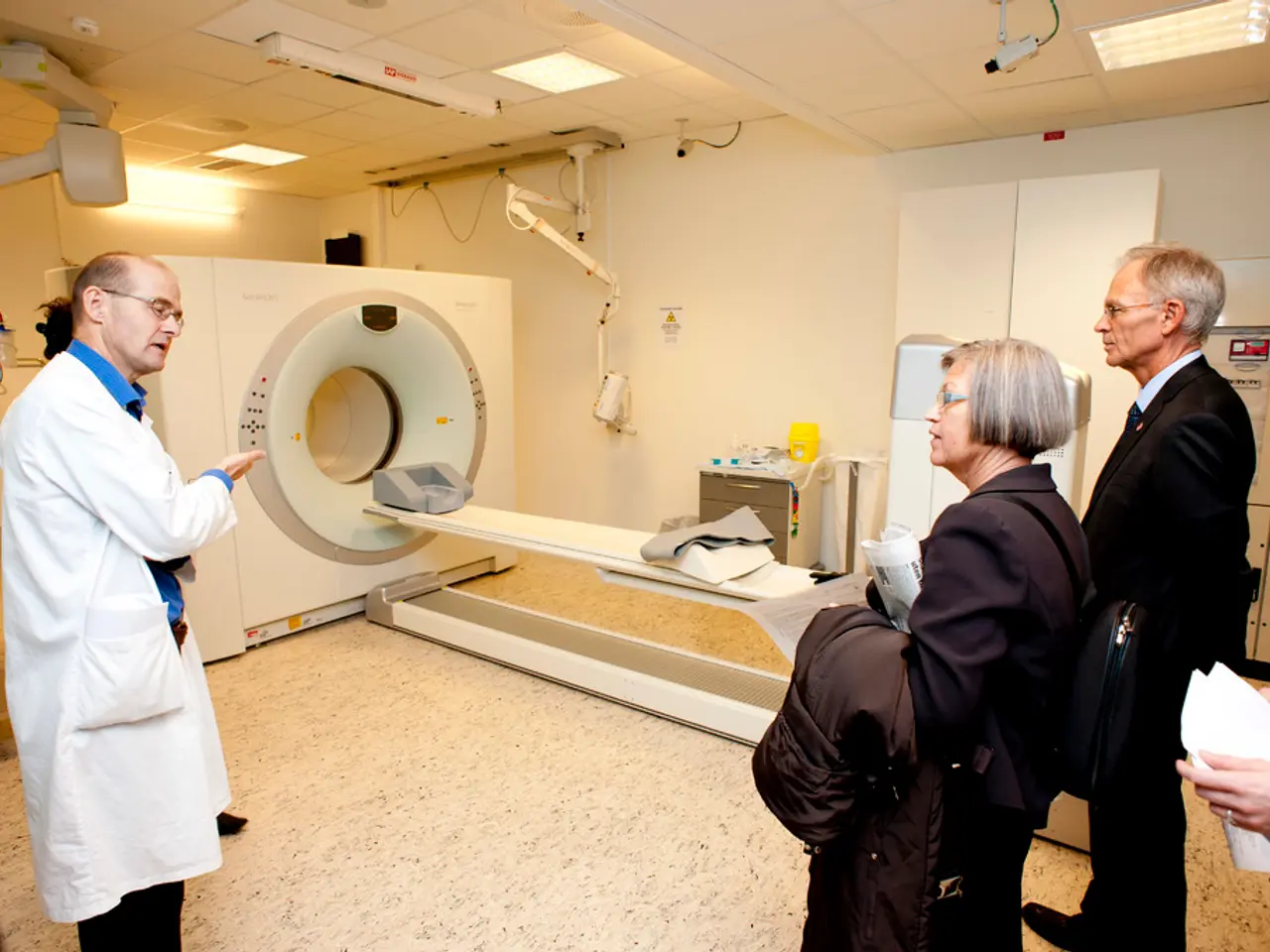Meningitis Symptoms and Images: Recognizing Meningitis, Its Marks, and Rashes Similar to It
Meningitis, an inflammation of the protective membranes surrounding the brain and spinal cord, can be a serious and potentially life-threatening condition. Recognising its symptoms, particularly the distinctive rash associated with bacterial meningitis, is crucial for prompt medical attention.
In infants, symptoms such as fever, shivering, and a stiff neck are indicative of meningitis. While milder cases of viral meningitis may resolve without treatment, more severe cases may require hospital care and potential antiviral medications. Fungal meningitis can be treated with antifungal medicines, and a person with meningitis may also need medications to prevent seizures and reduce brain inflammation.
One of the most concerning signs of bacterial meningitis is the rapid onset of a distinctive rash. This rash, known as petechiae, is characterised by small, irregular purple or red spots that appear on the trunk, lower extremities, mucous membranes, conjunctiva, and sometimes the palms or soles. Crucially, this rash is non-blanching, meaning it does not disappear when pressed with a glass, which is highly suggestive of meningococcal infection.
While not everyone with meningitis will have a rash, its presence—especially in the context of other symptoms like fever, headache, stiff neck, vomiting, and lethargy—should prompt urgent medical attention. Meningitis in teenagers and adults can present with symptoms such as severe headache, sensitivity to light, a stiff neck that is painful to move, abdominal pain, muscle pain, fever, double vision, mental changes including confusion, vomiting, seizures, and a rash or unusual skin coloration.
The meningitis rash develops due to broken blood vessels caused by meningococcal septicemia. It may be less apparent on darker skin tones and can appear anywhere on the body. Meningitis can lead to long-term complications such as headaches, concentration problems, memory loss, hearing problems, vision problems, weakness or paralysis, seizures, and kidney damage.
Preventing meningitis involves strategies such as not sharing personal items, washing hands properly and often, coughing and sneezing into the crook of the elbow, staying home when ill, and getting vaccinated, especially for children and adults with a higher risk. If meningitis is suspected, doctors may prescribe antibiotics as a precaution even before the exact cause of meningitis is clear.
It is important to note that the meningitis rash differs from viral rashes, which are usually less severe, more likely to blanch, and often accompanied by milder, non-specific symptoms. Other bacterial infections may cause rashes, but these are usually distinct in appearance and less specific than the classic meningococcal rash.
The glass test is an unreliable way to diagnose meningitis, and anyone presenting with meningitis symptoms should seek immediate emergency medical care. Approximately one-third of people with meningococcemia present with a petechial rash. People who may have a higher risk of meningitis include infants under the age of one, those who live in close communities, anyone with a weakened immune system, and people with certain medical conditions.
Doctors can diagnose meningitis through a physical exam, blood tests, spinal fluid tests, urine tests, CT scans, or MRI scans. The outlook for meningitis depends on factors such as the type of meningitis (bacterial, fungal, or viral) and the person's general health. Prompt treatment can greatly increase the chance of survival and reduce the risk of long-term complications.
- Ulcerative colitis, a chronic inflammatory bowel disease, shares some symptoms with meningitis, such as abdominal pain and fever.
- Science has made significant strides in predictive analytics, enabling medical professionals to identify the risk of chronic diseases like multiple sclerosis, diabetes, and chronic kidney disease.
- A rash on the skin could be a sign of skin conditions like psoriasis, eczema, or even a serious medical condition like meningitis.
- Depression, a mental-health issue, can lead to unexplained weight loss, fatigue, and rashes, making it essential to address both the physical and mental aspects of health and wellness.
- COPD (Chronic Obstructive Pulmonary Disease), a respiratory condition, can cause coughing, wheezing, and skin discoloration, especially in the fingers, due to poor circulation.
- Eye-health is crucial in monitoring conditions like multiple sclerosis that can affect the optic nerve and lead to vision problems.
- Science continues to explore the link between skin-care routines and skin conditions like psoriasis, offering new treatments and prevention methods.
- Bipolar disorder, a mental-health condition, can present with symptoms such as depression, mania, and skin rashes, emphasizing the interconnectedness of mental and physical health.
- Type 1 diabetes, a chronic disease, can lead to skin infections and rashes due to the body's inability to fight off infections effectively.
- Tailoring skin-care routines for specific skin conditions, such as psoriasis or eczema, is essential for achieving optimum skin health and wellness.
- Meningitis can lead to hearing issues as one of its long-term complications, highlighting the importance of regular check-ups for people who have had the disease.
- Medical-conditions, such as diabetes, can have a profound impact on a person's overall health, necessitating a holistic approach to healthcare that addresses both the physical and mental aspects.
- Preventing chronic diseases like diabetes, multiple sclerosis, and chronic kidney disease requires a proactive approach that includes healthy lifestyle choices, regular screenings, and in some cases, medication.




